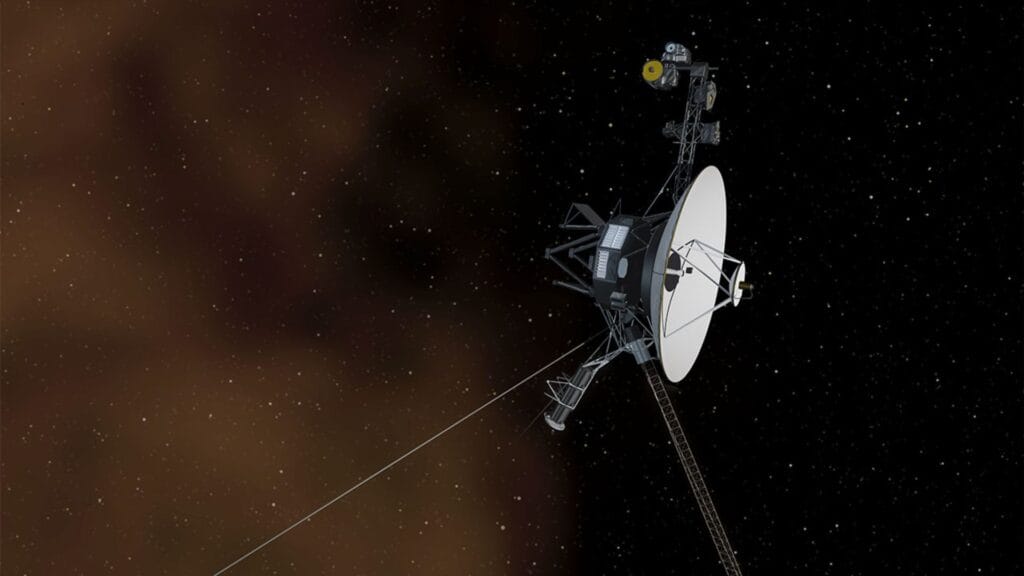After going silent for some time in October, Voyager has successfully resumed communicating with the Earth. The spacecraft, which has been on its journey for a whopping 47 years years in operation and is estimated at 15.4 billion miles (24.9 billion kilometers) away from Earth now, has once again put to the test human ingenuity in the exploration of the heavens and proven that even the oldest of machines can indeed show newfound resilience.

What Went Wrong?
In October, as a result of an energy-related problem caused by the decaying plutonium-powered energy source, Voyager was left dangling in space. Nowadays, it can only turn on four command instruments, since the spacecraft’s initial energy output has dwindled to just a fraction of its original power, ultimately subjected to temperature levels far colder than it was designed for. Hence, when the undersigned was commanded to turn on a heater to thaw his equipment, he triggered his mode of action designed to protect the instrument by turning off the X-band transmitter, which forms part of its main communications array. So this led Voyager 1 to switch to a weaker S-band transmitter with an output too weak to be detected by NASA’s Deep Space Network.
Now for weeks, the spacecraft drifted empty. This is a first in what could be described as a death knell. Trial and error; by early November, NASA engineers had the communication link back. By November 18, the X-band transmitter was again functional, allowing Voyager 1 to continue sending back valuable data from the remaining instruments, including the Cosmic-Ray Telescope and the Plasma Waves Experiment.
The Aging Problems of Spacecrafts
It’s not the first time that Voyager 1 has had such trouble, of course. It has sent back garbled telemetry and encountered system problems, including many age-related issues in the last few years. The twin sister Voyager 2 also had moments in 2023 when it had issues with its communication systems, indicating the delicacy and vulnerability of these spacecraft, once created several decades ago.
Each year, Voyager 1 is losing approximately 4 watts as the plutonium decays. And constantly making difficult and indecisive choices in turning off some non-related instruments or systems to prolong their existence. In September, Voyager 2 was scheduled to suspend its Plasma Science instrument, its first suspension in 16 years.
Both of these have continued to live through very straightened circumstances: their lives have outlasted those prescribed in their original missions. If they survive to 2027, their 50th anniversary, it will be quite a feat indeed.
Unmatched Heritage of Voyager
Voyager 1 and 2, launched in 1977, created history that no other spacecraft could. They reached the outer planets and brought exciting news, gigantic storms on Jupiter, wispy rings of Saturn, and even volcanic activity on Io. Voyager 2 is still the sole spacecraft to fly past both Uranus and Neptune.
In 2012, Voyager 1 became the first object created by humans to exit the heliosphere and enter the interstellar space frontier we once thought to be forever beyond reach. Even when they finally lose power, the Voyagers will continue their silent journey across the galaxy, orbiting for billions of years.
What I think about the comeback of Voyager 1
It is stories like these that remind one how spectacularly beautiful our universe is. A piece of man-made machinery is out there in interstellar space, traveling with no borders, no religions, and no politics. That alone proves what humanity can achieve when joined in curiosity and exploration, yet here on this earth, still fighting over haggling for issues like religion and boundaries. It is humbling, isn’t it?
I sometimes wonder if I will ever see it when Voyager 1 enters another galaxy. Maybe it will not be the case, but even thinking about it gives me goosebumps. The idea of this tiny spacecraft, a piece of Earth, floating in the great sea of the universe, is awe-inspiring.
What Can We Learn?
- Perseverance Pays Off: The engineers’ determination to fix Voyager 1 despite its vast distance and challenges is a lesson in persistence.
- Innovation Has No Limits: The Voyagers’ ongoing journey proves that even old technology, when designed well, can achieve greatness.
- Unity in Exploration: Space exploration transcends our earthly divisions. Projects like Voyager inspire us to focus on what unites us as a species.
What do you think about this? Does Voyager’s story inspire you as much as it does me? Let me know in the comments—I’d love to hear your thoughts on this incredible mission!
Minutes by M31GlobalNews






